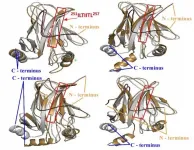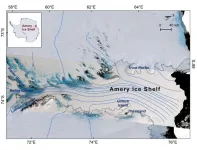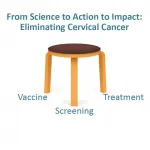(Press-News.org) March 4, 2021 -- COVID?19 has altered the labor market for millions of people, including public health graduates, yet an analysis of job postings for Master's level public health graduates showed that job postings remained at the same levels as before the pandemic, according to a new study at Columbia University Mailman School of Public Health. The findings are published in the International Journal of Health Planning and Management.
"Due to the crucial role of disease prevention in responding to and recovering from the COVID?19 pandemic, assessing the public health workforce remains critically important," said Heather Krasna, MS, EdM, assistant dean of career services at Columbia Mailman School, and lead author of the study. "Fortunately, the job market for master's level public health graduates has not been as negatively impacted by the COVID?19 pandemic as compared with the broader job market." Alternatively, overall job postings nationally dropped by up to 30 percent in the U. S. due to the pandemic.
An analysis of more than 38,533 job postings for master's level public health grads found that there were 92 different occupations which sought to hire public health graduates or that existed within the public health workforce.
To pinpoint changing employer demands associated with COVID?19, the researchers analyzed 24,516 postings from March 2019 to October 2019 - pre-COVID -- and compared them with 24,845 postings from March 2020 to October 2020 in the COVID era. The study utilized a job postings database, maintained by Burning Glass (BG) Technologies.
"Through an analysis of job postings in two timeframes, before COVID?19 and during the COVID?19 pandemic, we can assess whether demand for public health graduates has changed during the COVID?19 pandemic," said Krasna. "While there is no doubt that the labor market for millions of people changed with COVID-19, including public health graduates, it is notable that there were several hundred more job postings for public health graduates in the COVID-era, compared to pre-COVID jobs."
Pharmaceutical companies and insurance firms increased their numbers of job postings for public health graduates, while nonprofits and academia have seen job postings drop during COVID-19. Since the pandemic, up to 28 percent of job postings for public health graduates were in fields outside of the job definitions which have traditionally been listed as part of the public health workforce.
According to Krasna and colleagues, with this latest analysis, workforce planners and academic institutions can help identify possible workforce gaps, ensure that curriculum addresses the current needs of organizations hiring public health graduates, and provide insights to academia for curricula innovation.
The data also show a shortfall of positions for approximately 19 percent of Master's level public health graduates entering into government after graduation. This mismatch--in which not enough public health graduates are entering government to fill critical public health workforce shortages--may have serious repercussions for the ability of the governmental public health agencies to respond to public health crises including COVID?19.
The jobs with the fastest increases in hiring during the COVID?19 era focus on statistics and epidemiology, program management, computer?related positions, community health workers, and individuals managing clinical trials or research programs. An increased need for Chief Executives highlights the need for leadership training to meet the COVID?19 pandemic's management challenges or replace retiring public health executives. Universities preparing public health graduates can utilize this analysis to discern real?time job market requirements of employers, noted Krasna.
INFORMATION:
Columbia University Mailman School of Public Health
Founded in 1922, the Columbia University Mailman School of Public Health pursues an agenda of research, education, and service to address the critical and complex public health issues affecting New Yorkers, the nation and the world. The Columbia Mailman School is the seventh largest recipient of NIH grants among schools of public health. Its nearly 300 multi-disciplinary faculty members work in more than 100 countries around the world, addressing such issues as preventing infectious and chronic diseases, environmental health, maternal and child health, health policy, climate change and health, and public health preparedness. It is a leader in public health education with more than 1,300 graduate students from 55 nations pursuing a variety of master's and doctoral degree programs. The Columbia Mailman School is also home to numerous world-renowned research centers, including ICAP and the Center for Infection and Immunity. For more information, please visit http://www.mailman.columbia.edu.
PHILADELPHIA (March 4, 2021) - Equitable implementation of COVID?19 vaccine delivery is a national and global priority, with a strong focus on reducing existing disparities and not creating new disparities. But while a framework has been recognized for equitable allocation of COVID?19 vaccine that acknowledges the rights and interests of sexual and gender minorities (SGM), it fails to identify strategies or data to achieve that goal.
A new study with support from researchers at the University of Pennsylvania School of Nursing (Penn Nursing) examined the prevalence ...
There is no stronger risk factor for cancer than age. At the time of diagnosis, the median age of patients across all cancers is 66. That moment, however, is the culmination of years of clandestine tumor growth, and the answer to an important question has thus far remained elusive: When does a cancer first arise?
At least in some cases, the original cancer-causing mutation could have appeared as long as 40 years ago, according to a new study by researchers at Harvard Medical School and the Dana-Farber Cancer Institute.
Reconstructing the lineage history of cancer cells in two individuals with a rare blood cancer, the team calculated when the genetic mutation that ...
Efforts to duplicate on Earth the fusion reactions that power the sun and stars for unlimited energy must contend with extreme heat-load density that can damage the doughnut-shaped fusion facilities called tokamaks, the most widely used laboratory facilities that house fusion reactions, and shut them down. These loads flow against the walls of what are called divertor plates that extract waste heat from the tokamaks.
Far larger forecast
But using high-performance computers and artificial intelligence (AI), researchers at the U.S. Department of Energy's (DOE) Princeton Plasma Physics Laboratory (PPPL) have predicted a far larger and less damaging heat-load width for the full-power operation of ITER, the international tokamak under construction in France, than previous estimates ...
Humans and animals alike constantly size up one another. In the workplace, a new employee quickly learns which coworkers are the most respected -- and therefore hold more power. Big brothers boss around little brothers. In nature, a dominant male chimpanzee fights off would-be intruders. Even fish and octopi interact within social hierarchies.
These pecking orders have been studied within the behavioral ecology world for almost 100 years. How individuals interact can affect access to food and mates -- even survival -- and insights into those behaviors can lead to better management of threatened and endangered populations. But few studies have explored what the animals ...
HOUSTON - (March 4, 2021) - A mutation that replaces a single amino acid in a potent tumor-suppressing protein turns it from saint to sinister. A new study by a coalition of Texas institutions shows why that is more damaging than previously known.
The ubiquitous p53 protein in its natural state, sometimes called "the guardian of the genome," is a front-line protector against cancer. But the mutant form appears in 50% or more of human cancers and actively blocks cancer suppressors.
Researchers led by Peter Vekilov at the University of Houston (UH) and Anatoly Kolomeisky at Rice University have discovered the same mutant protein can aggregate into clusters. These in turn nucleate the formation of amyloid fibrils, a ...
As you scroll through Amazon looking for the perfect product, or flip through titles on Netflix searching for a movie to fit your mood, auto-generated recommendations can help you find exactly what you're looking for among extensive offerings.
These recommender systems are used in retail, entertainment, social networking and more. In a recently published study, two researchers from The University of Texas at Dallas investigated the informative role of these systems and the economic impacts on competing sellers and consumers.
"Recommender systems have become ubiquitous in e-commerce platforms and ...
Woolly mammoths may have walked the landscape at the same time as the earliest humans in what is now New England, according to a Dartmouth study published in END ...
ALBUQUERQUE, N.M. -- Using thin films -- no more than a few pieces of notebook paper thick -- of a common explosive chemical, researchers from Sandia National Laboratories studied how small-scale explosions start and grow. Sandia is the only lab in the U.S. that can make such detonatable thin films.
These experiments advanced fundamental knowledge of detonations. The data were also used to improve a Sandia-developed computer-modeling program used by universities, private companies and the Department of Defense to simulate how large-scale detonations initiate and propagate.
"It's neat, we're really pushing the limits on the ...
When a block of ice the size of Houston, Texas, broke off from East Antarctica's Amery Ice Shelf in 2019, scientists had anticipated the calving event, but not exactly where it would happen. Now, satellite data can help scientists measure the depth and shape of ice shelf fractures to better predict when and where calving events will occur, according to researchers.
Ice shelves make up nearly 75% of Antarctica's coastline and buttress -- or hold back -- the larger glaciers on land, said Shujie Wang, assistant professor of geography at Penn State. If the ice shelves were to collapse and Antarctica's glaciers fell ...
Amsterdam, March 4, 2021 - Cervical cancer is a serious global health threat which kills more than 300,000 women every year. It's a disease that disproportionately affects women in low- and middle-income countries in equatorial Africa, Latin America and Southeast Asia, yet it is a preventable disease and decades of research have produced the tools needed to eliminate it.
Recognizing this urgent public health issue, the editorial team of Preventive Medicine, led by Editor-in-Chief Dr. Eduardo Franco, Director, Division of Cancer Epidemiology and Chair, Gerald Bronfman Department of Oncology at McGill University, is publishing a special issue titled "From Science to Action to ...






